Resources and Development Class 10 NCERT Notes and MCQs
 02-04-2024
02-04-2024
 15:43 PM IST
15:43 PM IST
 Priyanka Chaudhary
Priyanka Chaudhary
This chapter discusses various natural resources, their degradation and conservation.
What is a Resource? What are the types of Resources?
Everything available in our environment which can be used to satisfy our needs, provided, it is technologically accessible, economically feasible and culturally acceptable can be termed as a ‘Resource’.
Types of Resources
On the basis of Origin:
- Biotic Resources: These are obtained from biosphere and have life such as human beings, flora and fauna, fisheries, livestock etc.
- Abiotic Resources: All those things which are composed of non-living things are called abiotic resources. For example, rocks and metals.
On the Basis of Exhaustibility:
- Renewable Resources: The resources which can be renewed or reproduced by physical, chemical or mechanical processes are known as renewable or replenishable resources. For example, solar and wind energy, water, forests and wildlife, etc.
- Non-Renewable Resources: These occur over a very long geological time and take millions of years in their formation. Minerals and fossil fuels are examples of such resources. Some of the resources like metals are recyclable and some like fossil fuels cannot be recycled and get exhausted with their use.
On the Basis of Ownership:
- Individual Resources: These are also owned privately by individuals. Plantation, pasture lands, ponds, water in wells etc. are some of the examples of resources ownership by individuals.
- Community Owned Resources: There are resources which are accessible to all the members of the community. Village commons like grazing grounds, burial grounds, village ponds, etc. are some examples.
- National Resources: Technically, all the resources belong to the nation. The country has legal powers to acquire even private property for public good. All the minerals, water resources, forests, wildlife, land within the political boundaries and oceanic area up to 12 nautical miles (22.2 km) from the coast termed as territorial water and resources therein belong to the nation.
- International Resources: There are international institutions which regulate some resources. The oceanic resources beyond 200 nautical miles of the Exclusive Economic Zone belong to open ocean and no individual country can utilise these without the concurrence of international institutions.
On the Basis of the Status of Development:
- Potential Resources: Resources which are found in a region, but have not been utilised. For example, the western parts of India particularly Rajasthan and Gujarat have enormous potential for the development of wind and solar energy.
- Developed Resources: Resources which are surveyed and their quality and quantity have been determined for utilisation. The development of resources depends on technology and the level of their feasibility.
- Stock: Materials in the environment that have the potential to satisfy human needs but human beings do not have the appropriate technology to access these, are included among stock.
- Hydrogen can be used as a rich source of energy. But we do not have advanced technical ‘know-how’ to use it for this purpose. Hence, it can be considered as stock.
- Reserves are the subset of the stock, which can be put into use with the help of existing technical ‘know-how’ but their use has not been started.
- River water can be used for generating hydroelectric power but presently, it is being utilised only to a limited extent. Thus, the water in the dams, forests etc. is a reserve which can be used in the future.
Problems due to indiscriminate use of resources
Depletion of resources for satisfying the greed of a few individuals.
Accumulation of resources in few hands, which, in turn, divided the society into two segments i.e. haves and have nots or rich and poor.
Indiscriminate exploitation of resources has led to global ecological crises such as, global warming, ozone layer depletion, environmental pollution and land degradation.
Resource Planning in India
Resource planning is a complex process which involves:
- Identification and inventory of resources across the regions of the country. This involves surveying, mapping and qualitative and quantitative estimation and measurement of the resources.
- Evolving a planning structure endowed with appropriate technology, skill and institutional set up for implementing resource development plans.
- Matching the resource development plans with overall national development plans.
Land Resources
- About 43% of the land area is plain, which provides facilities for agriculture and industry.
- Mountains account for 30% of the total surface area of the country and ensure perennial flow of some rivers, provide facilities for tourism and ecological aspects.
- About 27% of the area of the country is the plateau region and possesses rich reserves of minerals, fossil fuels and forests.
- Land resources are used for the following purposes:
- Forests
- Land not available for cultivation
- Barren and waste land
- Land put to non-agricultural uses, e.g. buildings, roads, factories, etc.
- Other uncultivated land (excluding fallow land)
- Permanent pastures and grazing land,
- Land under miscellaneous tree crops groves (not included in net sown area),
- Culturable waste land (left uncultivated for more than 5 agricultural years).
- Fallow lands
- Current fallow - (left without cultivation for one or less than one agricultural year),
- Other than current fallow-(left uncultivated for the past 1 to 5 agricultural years).
- Net sown area: The physical extent of land on which crops are sown harvested. Area sown more than once in an agricultural year plus net sown area is known as gross cropped area.
Land Use Pattern in India
- Compared to 1960-61, in 2014-15, the land under permanent pasture has decreased.
- Most of the other than the current fallow lands are either of poor quality or the cost of cultivation of such land is very high.
- Hence, these lands are cultivated once or twice in about two to three years and if these are included in the net sown area then the percentage of NSA in India comes to about 54% of the total reporting area.
- Forest area in the country is far lower than the desired 33 per cent of geographical area, as it was outlined in the National Forest Policy (1952).
- Waste land includes rocky, arid and desert areas and land put to other non-agricultural uses including settlements, roads, railways, industry etc.
Source: Ministry of Agriculture, 2017
Land Degradation
- Human activities have not only brought about degradation of land but have also aggravated the pace of natural forces to cause damage to land.
- Some human activities such as deforestation, over grazing, mining and quarrying too have contributed significantly to land degradation.
- Mining sites are abandoned after excavation work is complete leaving deep scars and traces of over-burdening.
- In states like Gujarat, Rajasthan, Madhya Pradesh and Maharashtra overgrazing is one of the main reasons for land degradation.
- In the states of Punjab, Haryana, western Uttar Pradesh, over irrigation is responsible for land degradation due to water logging leading to increase in salinity and alkalinity in the soil.
- The mineral processing like grinding of limestone for cement industry and calcite and soapstone for ceramic industry generate huge quantity of dust in the atmosphere.
- It retards the process of infiltration of water into the soil after it settles down on the land. In recent years, industrial effluents as waste have become a major source of land and water pollution in many parts of the country.
Steps for Land Conservation
- Afforestation and proper management of grazing.
- Planting of shelter belts of plants
- Control on over grazing
- Stabilization of sand dunes by growing thorny bushes
- Proper management of waste lands
- Control of mining activities
- Proper discharge and disposal of industrial effluents and wastes after treatment.
Soil as a Resource
Soil is a medium of plant growth and supports different types of living organisms on the earth.
Relief, parent rock or bed rock, climate, vegetation and other forms of life and time are important factors in the formation of soil.
Soil also consists of organic (humus) and inorganic materials.
Fig: Soil Profile (Source: NCERT)
Classification of Soil
Alluvial Soils
- This is the most widely spread and important soil. The entire northern plains are made of alluvial soil.
- These have been deposited by three important Himalayan river systems– the Indus, the Ganga and the Brahmaputra.
- These soils also extend in Rajasthan and Gujarat through a narrow corridor.
- Alluvial soil is also found in the eastern coastal plains particularly in the deltas of the Mahanadi, the Godavari, the Krishna and the Kaveri rivers.
- The alluvial soil consists of various proportions of sand, silt and clay.
- As we move inlands towards the river valleys, soil particles appear somewhat bigger in size.
- In the upper reaches of the river valley i.e. near the place of the break of slope, the soils are coarse.
- Such soils are more common in piedmont plains such as Duars, Chos and Terai.
- Soils are also described on the basis of their age. According to their age alluvial soils can be classified as old alluvial (Bangar) and new alluvial (Khadar).
- The bangar soil has higher concentration of kanker nodules than the Khadar. It has more fine particles and is more fertile than the bangar.
- Mostly these soils contain adequate proportion of potash, phosphoric acid and lime which are ideal for the growth of sugarcane, paddy, wheat and other cereal and pulse crops.
- Due to its high fertility, regions of alluvial soils are intensively cultivated and densely populated.
- Soils in the drier areas are more alkaline and can be productive after proper treatment and irrigation.
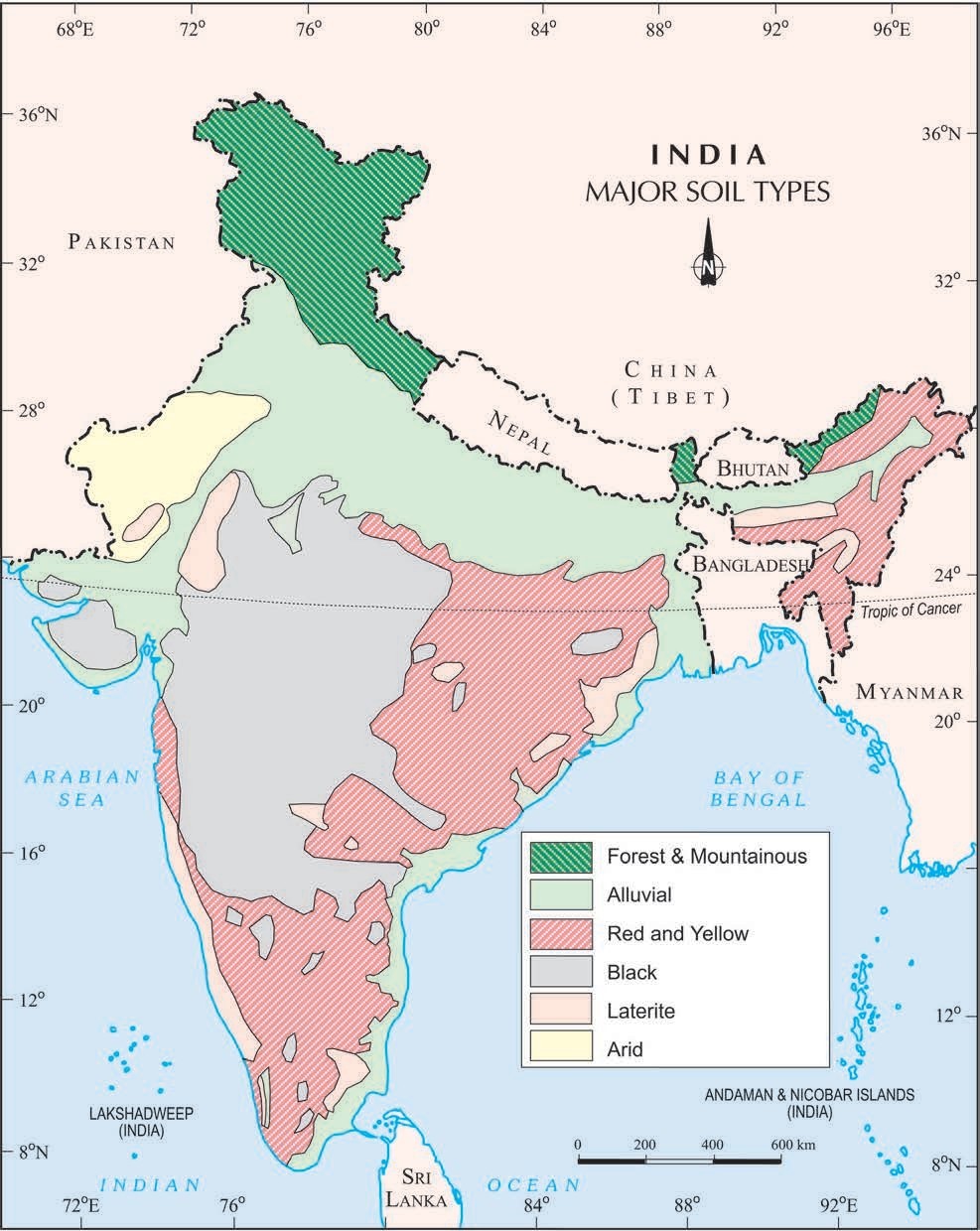
(Source: NCERT)
Black Soil
- These soils are black in colour and are also known as regur soils.
- Black soil is ideal for growing cotton and is also known as black cotton soil.
- It is believed that climatic conditions along with the parent rock material are the important factors for the formation of black soil.
- This type of soil is typical of the Deccan trap (Basalt) region spread over northwest Deccan plateau and is made up of lava flows.
- They cover the plateaus of Maharashtra, Saurashtra, Malwa, Madhya Pradesh and Chhattisgarh and extend in the south east direction along the Godavari and the Krishna valleys.
- The black soils are made up of extremely fine i.e., clayey material. They are well-known for their capacity to hold moisture.
- In addition, they are rich in soil nutrients, such as calcium carbonate, magnesium, potash and lime. These soils are generally poor in phosphoric contents.
- They develop deep cracks during hot weather, which helps in the proper aeration of the soil.
- These soils are sticky when wet and difficult to work on unless tilled immediately after the first shower or during the pre-monsoon period.
Red and Yellow Soils
- Red soil develops on crystalline igneous rocks in areas of low rainfall in the eastern and southern parts of the Deccan plateau.
- Yellow and red soils are also found in parts of Odisha, Chhattisgarh, southern parts of the middle Ganga plain and along the piedmont zone of the Western Ghats.
- These soils develop a reddish colour due to diffusion of iron in crystalline and metamorphic rocks.
- It looks yellow when it occurs in a hydrated form.
Laterite Soils
- Laterite has been derived from the Latin word ‘later’ which means brick.
- The laterite soil develops under tropical and subtropical climate with alternate wet and dry season.
- This soil is the result of intense leaching due to heavy rain.
- Lateritic soils are mostly deep to very deep, acidic (pH<6.0), generally deficient in plant nutrients and occur mostly in southern states, Western Ghats region of Maharashtra, Odisha, some parts of West Bengal and North-east regions.
- Where these soils support deciduous and evergreen forests, it is humus rich, but under sparse vegetation and in semi-arid environment, it is generally humus poor.
- They are prone to erosion and degradation due to their position on the landscape.
- After adopting appropriate soil conservation techniques particularly in the hilly areas of Karnataka, Kerala and Tamil Nadu, this soil is very useful for growing tea and coffee.
- Red laterite soils in Tamil Nadu, Andhra Pradesh and Kerala are more suitable for crops like cashew nut.
Arid Soils
- Arid soils range from red to brown in colour.
- They are generally sandy in texture and saline in nature.
- In some areas the salt content is very high and common salt is obtained by evaporating the water.
- Due to the dry climate, high temperature, evaporation is faster and the soil lacks humus and moisture.
- The lower horizons of the soil are occupied by Kankar because of the increasing calcium content downwards.
- The Kankar layer formations in the bottom horizons restrict the infiltration of water. After proper irrigation these soils become cultivable.
Forest Soils
- These soils are found in hilly and mountainous areas where sufficient rain forests are available.
- The soils texture varies according to the mountain environment where they are formed.
- They are loamy and silty in valley sides and coarse grained in the upper slopes.
- In the snow-covered areas of Himalayas, these soils experience denudation and are acidic with low humus content.
- The soils found in the lower parts of the valleys particularly on the river terraces and alluvial fans are fertile.
Soil Erosion
- The denudation of the soil cover and subsequent washing down is described as soil erosion. The processes of soil formation and erosion, go on simultaneously and generally there is a balance between the two.
- The running water cuts through the clayey soils and makes deep channels as gullies. The land becomes unfit for cultivation and is known as bad land. In the Chambal basin such lands are called ravines.
- Sometimes water flows as a sheet over large areas down a slope. In such cases the top soil is washed away. This is known as sheet erosion.
- Wind blows loose soil off flat or sloping land known as wind erosion.
- Soil erosion is also caused due to defective methods of farming. Ploughing in a wrong way i.e., up and down the slope form channels for the quick flow of water leads to soil erosion.
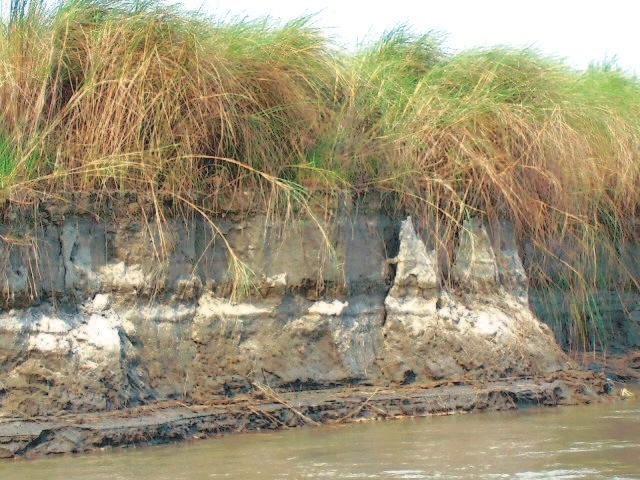
(Source: NCERT)
Soil Conservation
- Contour Ploughing: Ploughing along the contour lines can decelerate the flow of water down the slopes.
- Terrace farming: Steps can be cut out on the slopes making terraces. Terrace cultivation restricts erosion. Western and central Himalayas have well developed terrace farming.
- Strip cropping: Large fields can be divided into strips. Strips of grass are left to grow between the crops. This breaks up the force of the wind.
- Creating Shelter belts: Planting lines of trees to create shelter also works in a similar way. These shelter belts have contributed significantly to the stabilisation of sand dunes and in stabilising the desert in western India.
Example of Land conservation in India
The village of Sukhomajri and the district of Jhabua have shown that it is possible to reverse land degradation. Tree density in Sukhomajri increased from 13 per hectare in 1976 to 1,272 per hectare in 1992.
Regeneration of the environment leads to economic well-being, as a result of greater resource availability, improved agriculture and animal care, and consequently, increased incomes. Average annual household income in Sukhomajri ranged from Rs 10,000-15,000 between 1979 and 1984.
People’s management is essential for ecological restoration. With people being made the decision-makers by the Madhya Pradesh government, 2.9 million hectares or about 1 per cent of India’s land area, are being greened across the state through watershed management.
Resource Conservation
- At the international level, the Club of Rome advocated resource conservation for the first time in a more systematic way in 1968.
- Subsequently, in 1974, Gandhian philosophy was once again presented by Schumacher in his book Small is Beautiful.
- The seminal contribution with respect to resource conservation at the global level was made by the Brundtland Commission Report, 1987.
- This report introduced the concept of ‘Sustainable Development’ and advocated it as a means for resource conservation, which was subsequently published in a book entitled Our Common Future.
- Another significant contribution was made at the Earth Summit at Rio de Janeiro, Brazil in 1992.
Sustainable Development
Sustainable economic development means ‘development should take place without damaging the environment, and development in the present should not compromise with the needs of the future generations.’
Rio de Janeiro Earth Summit, 1992:
- In June 1992, more than 100 heads of states met in Rio de Janeiro in Brazil, for the first International Earth Summit.
- The Summit was convened for addressing urgent problems of environmental protection and socio-economic development at the global level.
- The assembled leaders signed the Declaration on Global Climatic Change and Biological Diversity.
- The Rio Convention endorsed the global Forest Principles and adopted Agenda 21 for achieving Sustainable Development in the 21st century.
Agenda 21:
- It is the declaration signed by world leader in 1992 at the United Nations Conference on Environment and Development (UNCED), which took place at Rio de Janeiro, Brazil.
- It aims at achieving global sustainable development.
- It is an agenda to combat environmental damage, poverty, disease through global co-operation on common interests, mutual needs and shared responsibilities.
- One major objective of the Agenda 21 is that every local government should draw its own local Agenda 21.
MCQs based on NCERT Class 10 Geography Chapter 1: Resources and Development
1. Which one of the following is the main cause of land degradation in Punjab?
(a) Intensive cultivation
(b) Deforestation
(c) Over irrigation
(d) Overgrazing
Ans. c
2. In which one of the following states is terrace cultivation practised?
(a) Punjab
(b) Plains of Uttar Pradesh
(c) Haryana
(d) Uttarakhand
Ans. d
3. In which of the following states black soil is predominantly found?
(a) Uttar Pradesh
(b) Maharashtra
(c) Rajasthan
(d) Jharkhand
Ans. b
4. Which crop is mainly grown in black soil?
(a) Cotton
(b) Jute
(c) Rice
(d) Wheat
Ans. a
5. What type of soil is found in the river deltas of the eastern coast?
(a) Red Soil
(b) Laterite Soil
(c) Alluvial Soil
(d) Black Soil
Ans. c
6. Which is the intensively leached soils of the monsoon climate?
(a) Red Soil
(b) Laterite Soil
(c) Alluvial Soil
(d) Arid Soil
Ans. b
Frequently Asked Questions (FAQs) about Resources and Development
The Great Plains of India are made up of which soil?
Name three states having black soil.
What is strip cropping?
What is sheet erosion?
What is Sustainable development?
Share Blog
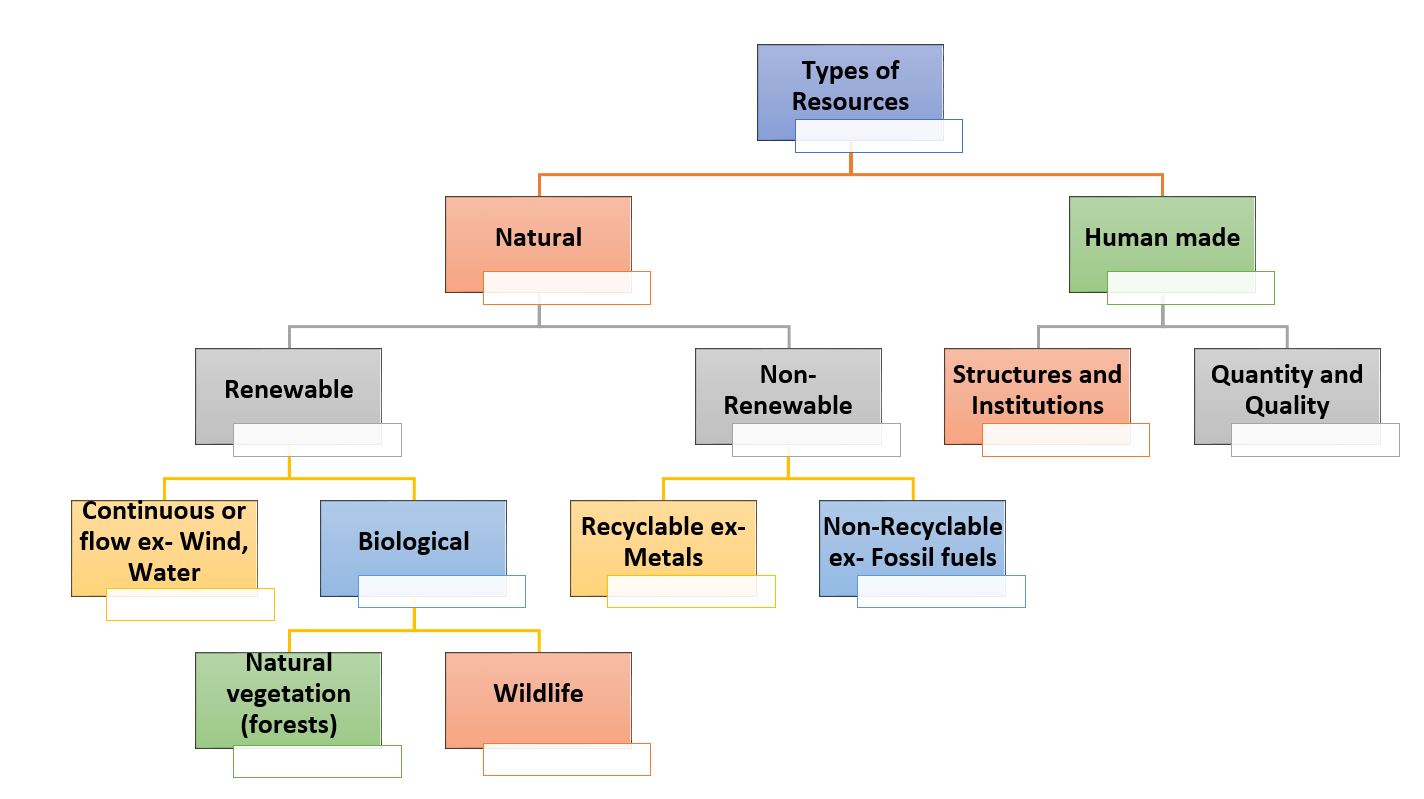
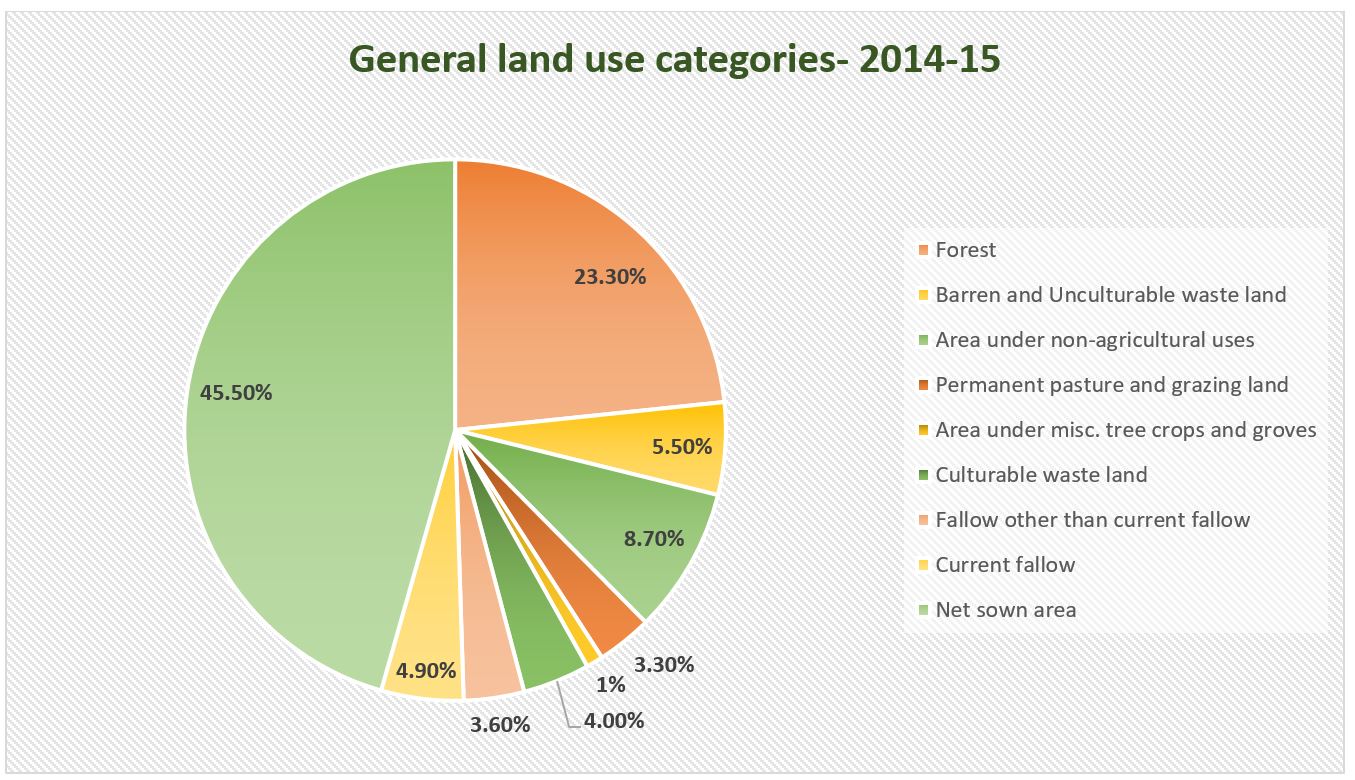
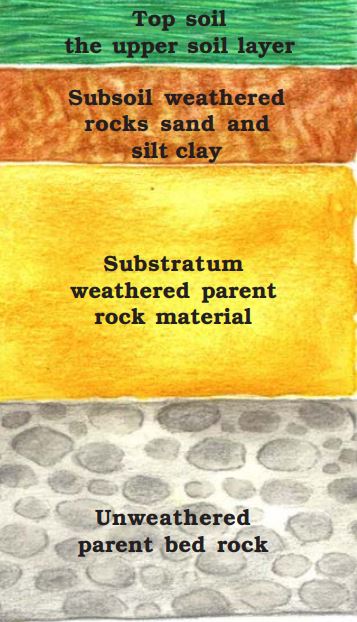
 Latest
Latest 
Comments